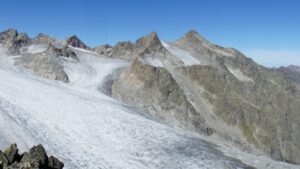SW 3.100: Story of the Himalayan Lakes and Streams of India
Details
Full Title
The Burning Tears of Himalaya
Scheduled
—
Convener
Co-Conveners
Assigned to Synthesis Workshop
—
Categories
Policy, Cryo- & Hydrosphere, Conservation, Paleoperspective, Water Resources
Keywords
Himalayan lakes, lose in biodiversity, shrinkage of lakes, Erosion of topsoil, Conservation policy
Description
The Himalayan Region is blessed with the water resources and the Himalayan Rivers have made several lakes during their course. The South Asian Region is being due to many reasons losing them drastically. This region is losing the identity of these lakes. The Wular Lake was known as the largest Fresh water in South Asian Region and the Dal Lake made due the Jhelum River, rivers like Kabartal in which is the largest freshwater oxbow lake made in the course of the Budhi Gandak in the Asian continent a paradise for migratory birds, Loktak Lake. These lakes are not disappearing just because of climate warming rather dumping of pollutants knowingly and local, state or national governments remain ruthless in managing these resources leading to the vanishing river ecology and adjacent mountain’s ecology too. The polluted rivers and lakes are causing damages to mountain flora and fauna. The workshop has basic ideas if this workshop to develop the ideas to preserve water bodies in the Indian Himalayan contour by developing the idea of governing the water heritage of Himalayan Region by an integrated Himalayan administration and protection of the Himalayans waters by developing the small water banks in the Himalayans Terrain to preserve moisture in the Himalayan soils to sustain vegetation and maintaining bio diversity and the soil level. In absence of moisture the Himalayan surface would be prone to erosion.


